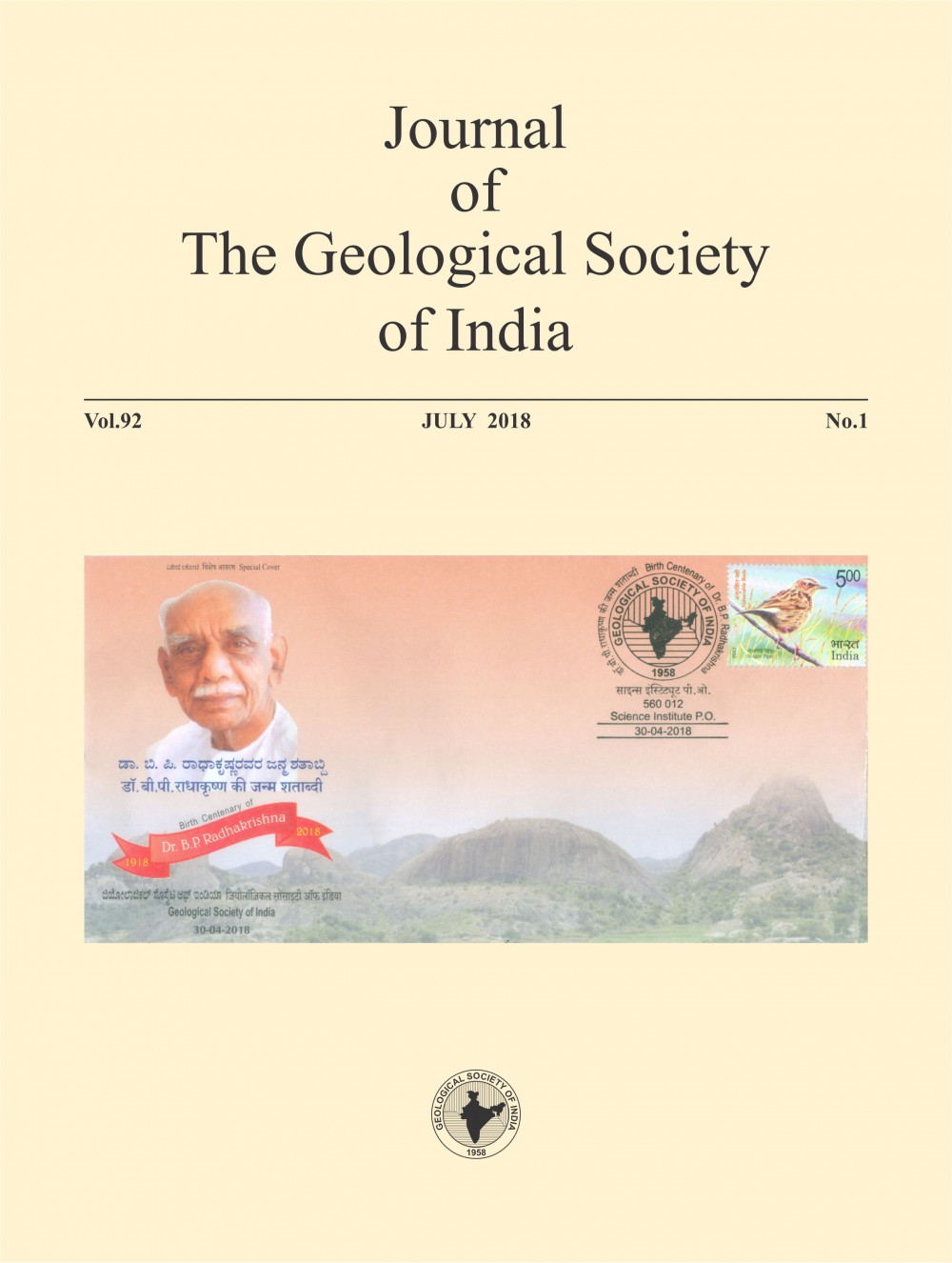Global Attenuation Relationship for Estimating Peak Ground Acceleration
DOI:
https://doi.org/10.1007//s12594-018-%200952-4Abstract
Peak Ground Acceleration (PGA) is a very important ground motion parameter which is used to define the degree of ground shaking during an earthquake. It is also very helpful for designing earthquake resistant structure. The PGA can be estimated by attenuation relationships using magnitude, distance, source type etc. of a ground motion. In the past, several researchers have developed over 450 attenuation relationships for predicting PGA for a specific region. In the present study an attempt has been made to develop an attenuation relationship on the basis of these available previous relationships in rock site which will be applicable for any region of the world. In the present study, PGA has been expressed as a function of moment magnitude and hypo-central distance in rock site. Chi-square test have also been performed with available earthquake data in American and Indian region for verifying the accuracy of the generated attenuation relationship. Using multiple regression and Genetic Algorithm (GA) the attenuation relationship equations have also been generated. These equations will be very helpful for performing seismic hazard analysis and predicting earthquake force in any region of the world.Downloads
Metrics
Issue
Section
Downloads
Published
How to Cite
References
Abrahamson, N.A., Gregor, N. and Addo, K. (2016) BC Hydro ground motion prediction equations for subduction earthquakes. Earthquake Spectra, v. 32(1), pp. 23-44.
Abrahamson, N.A. and Silva, W. (2008) Summary of the Abrahamson & Silva NGA ground-motion relations. Earthquake Spectra, v. 24(1), pp. 67-97.
Agrawal, S.K. and Chawla, J. (2006) Seismic hazard assessment for Delhi region. Curr. Sci., v. 91(12), pp. 1717-1724.
Atkinson, G.M. and Boore, D.M. (2003) Empirical ground-motion relations for subduction zone earthquakes and their application to Cascadia and other regions. Bull. Sesmol. Soc. Amer., v. 93(4), pp. 1703-1719.
Boore, D.M. et al. (2014) NGA-West2 equations for predicting response spectral accelerations for shallow crustal earthquakes. Earthquake Spectra, v. 30(3), pp. 1057-1085.
Campbell, K.W. and Bozorgnia, E. (2003) Updated near-source ground-motion (attenuation) relations for the horizontal and vertical components of peak ground acceleration and acceleration response spectra. Bull. Sesmol. Soc. Amer., v. 93(4), p. 1872.
Das, N.G. (2008) Statistical Methods, Kolkata: Tata McGraw-Hill Education.
Das, R. et al. (2017) Reply to "comments on "Unbiased estimation of moment magnitude from body?and surface?wave magnitudes" by Ranjit Das, H. R. Wason and M. L. Sharma and "Comparative analysis of regression methods used for seismic magnitude conversions" by P. Gasperini, B. Lolli, Bull. Sesmol. Soc. America.
Das, R., Wason, H.R. and Sharma, M.L. (2014a) Comment on "General Orthogonal Regression Relations between Body? Wave and Moment Magnitudes" by Ranjit Das, HR Wason, and ML Sharma" by Paolo Gasperini and Barbara Lolli. Seismol. Res. Lett., v. 85(2), pp. 352-353.
Das, R., Wason, H.R. and Sharma, M.L. (2013) General Orthogonal Regression Relations between body wave and moment magnitudes. Seismol. Res. Lett., v. 84, pp. 219-224.
Das, R., Wason, H.R. and Sharma, M.L. (2011) Global regression relations for conversion of surface wave and body wave magnitudes to moment magnitude. Natural Hazards, v. 59(2), pp. 801-810.
Das, R., Wason, H.R. and Sharma, M.L. (2012) Magnitude conversion to unified moment magnitude using orthogonal regression relation. Jour. Asian Earth Sci., v. 50, pp. 44-51.
Das, R., Wason, H.R. and Sharma, M.L. (2016) Region, Probabilistic seismic hazard assessment for Northeast India. Pure Appld. Geophys., v. 173, pp. 2653-2670.
Das, R., Wason, H. R. and Sharma, M. L. (2014b) Unbiased estimation of moment magnitude from body?and surface?wave magnitudes. Bull. Sesmol. Soc. America, v. 104(4), pp. 1802-1811.
Douglas, J. (2017) Ground motion prediction equations 1964 to 2016, Glasgow.
Ferreira, F. (2001) Gene Expression Programming: A New Adaptive Algorithm for Solving Problems. Complex Systems, v. 13, pp. 87-129.
Haldar, A. and Mahadevan, S. (2000) Probability, Reliability, and Statistical Methods in Engineering Design, Wiley.
Shiuly, A., Kumar, V. and Narayan, J. (2014) Computation of ground motion amplification in Kolkata megacity (India) using finite-difference method for seismic microzonation. Acta Geophysica, v. 62(3), pp. 425-450. Available at: http://www.degruyter.com/view/j/acgeo.2014.62.issue-3/s11600-013-0169-2/s11600-013-0169-2.xml.
Shiuly, A. and Narayan, J.P. (2012) Deterministic seismic microzonation of Kolkata city. Natural Hazards, 60(2), pp. 223-240.
Shiuly, A., Sahu, R.B. and Mandal, S. (2015) Seismic microzonation of Kolkata. Geomech. Engg., v. 9(2), pp. 125-144.
Shiuly, A., Sahu, R.B. and Mandal, S. (2017) Site specific seismic hazard analysis and determination of response spectra of Kolkata for maximum considered earthquake. Jour. Geophys. Engg., v. 14(3), pp. 466-477.
Youngs, R.R. et al. (1997) Strong ground motion attenuation relationships for subduction zone earthquakes. Seismol. Res. Lett., v. 69(1), pp. 58-73.

 Amit Shiuly
Amit Shiuly






